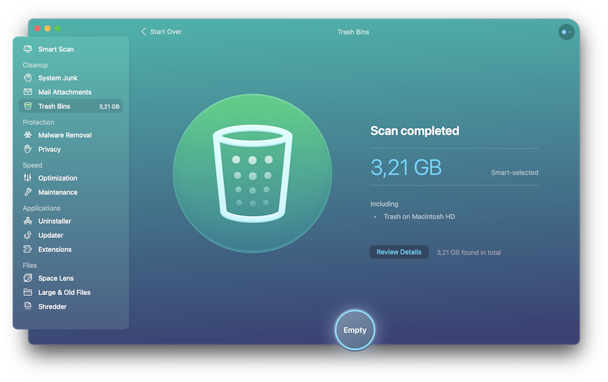Trash Party Mac OS
Vanessa Monique Smith wonders about deleted files:
Without using additional software, can I find files I have deleted on Mac OS X El Capitan?
This is a rich question, because there are so many possibilities. Apple doesn’t include an “undelete” tool as such, but it has a lot of ways to back out of a deletion before the file is gone for good, and third-party software you may already be using can help, too:
Trash Party Mac Os Download
- If the last thing you did in the Finder was to delete a file or files (drag to Trash or select and then File > Empty Trash or Command-Delete), you can select Edit > Undo Move (Command-Z) and the items return to their previous positions.
- If the deleted files are still in the Trash, you can click the Trash icon in the Dock and drag the items out.
- If you have Time Machine installed, the files may have been backed up between your last edit (if any were recent) and deleting them. Launch Time Machine and use the Spotlight field to find the deleted files and then restore the items.
- If you use a program to clone your drives regularly as an extra backup insurance policy (like SuperDuper ($28) or Carbon Copy Cloner ($40)), the file will be on the cloned copy if the app hasn’t performed another image update since the last backup, or if you have file history enabled with the cloning software you’re using.
- If you use Dropbox and the files were fully uploaded in the versions you want before you deleted them, you can go to the Dropbox website and search for deleted files, and then select and restore them. They’re returned to the same folder position even.
- If you use an Internet-hosted backup system, like Crashplan or Backblaze, you may have one or more previous versions of the file or even the latest version stored in the online archive. Use the appropriate interface to find the version you want and restore it.
However, if none of those conditions is true, you still have options, but stop using your computer immediately until you can get the appropriate software. When files are deleted in most operating systems, they aren’t erased from permanent storage, but rather an index that points to the files is removed. If you keep working on the computer, it’s possible the old data will be overwritten by new files. Third-party apps can scan the drive to find fragments and files, and sometimes make complete recoveries.
The fact is using Terminal commands is not everyone’s favorite method of cleansing your Trash, and in these cases third party Mac optimization apps can help.OnyX (free), for example, has such a feature included in the cleaning section under the “Trash” tab. Atlantis gold casino bonus code. Simply selecting “Delete” will empty all items from Trash. The process is even easier with CleanMyMac using its trash bins. Regular way to recover Trash on Mac directly. When you notice that you lose some valuable data. Play chocolatier online free.
Mac Trash Location

In the olden days, I routinely had to recover corrupted and deleted files, and had multiple tools. Now, due to Dropbox and backups, I haven’t need to scan a disk for deleted documents in at least a decade. However, Macworld has reviewed two tools in the last year you can check out: Data Rescue One ($60 for the home user version on a USB memory stick) and MiniTool Data Recovery ($70, bootable CD, can create a bootable USB memory stick).
Ask Mac 911
Force Empty Trash Mac Os
We’ve compiled a list of the most commonly asked questions we get, and the answers to them: read our super FAQ to see if you’re covered. If not, we’re always looking for new problems to solve! Email yours to mac911@macworld.com including screen captures as appropriate. Mac 911 cannot reply to email with troubleshooting advice nor can we publish answers to every question.